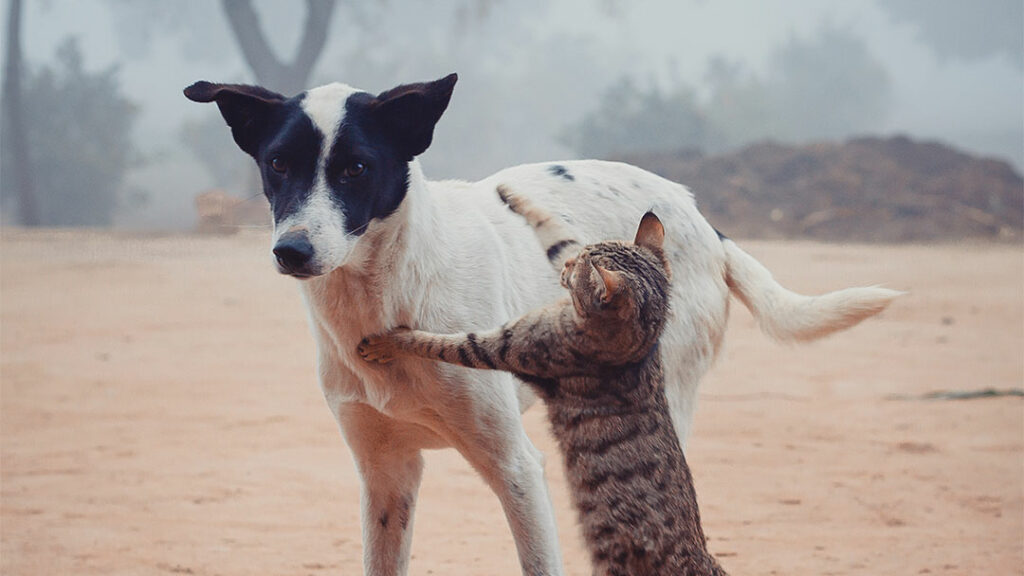When winter comes, we all need to think about how to give our cool outdoor cats warm and safe shelter. An outdoor cat house for winter must provide all of these for insulation, to protect kitties from bad weather and to make them comfortable. Whether you are caretaking a feral cat, a community cat or even just your outdoor kitty, knowing how to construct or select the best winter shelter can mean a world of difference between life and death. This post is about what makes a great winter cat house, and offers ideas for how to help your kitty stay warm and toasty this winter.
Why Outdoor Cats Need Winter Shelter
Stray cats and feral cats need a little extra care when the cold weather hits, because they are not in warm homes with humans caring for them. Without somewhere to stay warm, cats can develop hypothermia, frostbite and other cold-related health issues. They are not like an indoor cat that can keep themselves warm. Well well-designed outdoor cat house is a shelter for your outdoor cats, including feral cats, that provides a safe and affordable shelter. It allows feral or outdoor cats to stay dry and shelters them from cold weather in the winter and the hot sun in the summer.
But remember that cats can handle cold to an extent, but extreme, prolonged conditions are dangerous. One of my favourite outdoor cat shelters gives these cats a fighting chance to survive the winter while continuing to stay in their territory near people who provide them with food and water.
Features of the Best Cat Outdoor House for Winter
When you are choosing or making a cat’s outdoor house for winter, you should ensure that it meets the following focal points that are designed to offer them the warmth and protection that they need:
Insulation and Warmth
The most important feature of any winter cat house is insulation. It holds in the heat and pushes back the cold materials such as Styrofoam, foam boards, or even straw bedding can make for great insulation. Straw works well because it doesn’t retain moisture and is naturally warm. Never bring blankets or towels into the shelter as they will hold moisture and lead to chills.
The kennel will have thick walls, a raised floor, which means the dog will not be in contact with the floor and a small entrance area to prevent heat escape. The smaller the hole, the more efficient it is at conserving heat, but it must be large enough for the cat to get in and out comfortably.
Wind and Moisture-Shielding
Wind chill can decrease the temperature inside a shelter by many degrees. By placing your cat house near a building, fence or under a bush, it will stay warm and dry, particularly during our winter months. The shelter’s entry should not face the wind.
The roof and walls must be waterproofed to prevent rain and snow from soaking the interior.. Elevated floors keep the shelter up off the ground and reduce the chance that water will seep in, so you can stay warm and dry.
Size and Accessibility
The cat house should be just right in size — not too big that the cat does not feel like it can keep it warm, and not too small that the cat can’t at least turn around and lie down comfortably. Oversized shelters quickly shed warmth and become more difficult for cats to warm up.
It would also be important for the shelter to be easily penetrable by cats, yet formidable enough to discourage larger predators. A small tunnel-like entrance can prevent unwelcome visitors from bothering the cat.
Popular Types of Cat Outdoor Houses for Winter
DIY Cat House Ideas
There are a lot of cat lovers who do not want to buy a ready made cat outdoor house for winter; this is why many make a custom one based on one’s environment and cat needs. Most common DIY designs incorporate low-cost resources like plastic storage containers, wooden crates, or coolers. Insulating foam boards inserted between the walls, along with the use of straw for bedding, keeps the interior warm.
A basic DIY shelter may consist of two plastic bins — one slightly smaller than the other, to fit inside, with insulation in between. A plastic or heavy fabric flap that keeps out draughts is secured to the outside of the cat flap with a brush seal around the opening.
Commercial Cat Houses
There are some different commercial cat houses made specially for winter. These typically have insulation, water resistant fabric and raised floors built in. Some models have removable roofs for easy cleaning and weather-resistant flaps for doors.
Pay for a decent commercial cat house This will save time and effort, but may cost more. Make sure you select one that suits both your climate and the number of cats you want to house.
Heated Cat Houses
You can also opt for a heated cat house if you live in an area with harsh winters. Such shelters feature low-voltage heating pads or heated flooring to deliver constant warmth. Many are solar-powered or plug into an outside power source.
Heated homes are warmer, they need to be checked more regularly and don’t want to burn up or electrocute much. They are ideal for cats that are frequently monitored and have access to reliable power outlets.
Essential Tips for Maintaining a Cat’s Outdoor House in Winter
Regular Bedding Replacement
Straw bedding should be cleaned as necessary, particularly if it is wet or soiled. Wet bedding destroys its insulating qualities and can cause health problems, including respiratory infections and hypothermia.
Shelter Placement
Place the cat house in an area where the wind is blocked and snow doesn’t pile up against it. Consider a spot under a porch, near a garage, or behind a windbreak.
Multiple Shelters for Multiple Cats
Take care to respect the pecking order if you have multiple outdoor cats, so that there are enough shelters to go around and each cat has a warm place to hide out. It is, however, important to place shelters far enough apart that cats feel they have some privacy.
Monitor Shelter Use and Cat Health
Monitor shelters throughout the winter to make sure cats are using and staying healthy in them. Signs that a cat may be in trouble include a lack of energy, shivering or an unwillingness to come inside. If you see these signs, you may want to bring the cat inside or seek veterinary care.
Conclusion
Providing the best cat outdoor house for winter means focusing on warmth, protection, and comfort. Whether you construct a DIY shelter, buy a commercial model, or opt for a heated house, you want to create a comfortable refuge that protects cats from the elements. With enough insulation, barriers to wind, and dry bedding, feral cats will tolerate frigid winter weather, and they find shelter and care in those winter homes.
By prepping and putting the shelter in the area they frequent, you can stave off health upsets for these precious pets you are tending. Your response does more than provide comfort, it shows compassion for these indomitable and precious animals.



